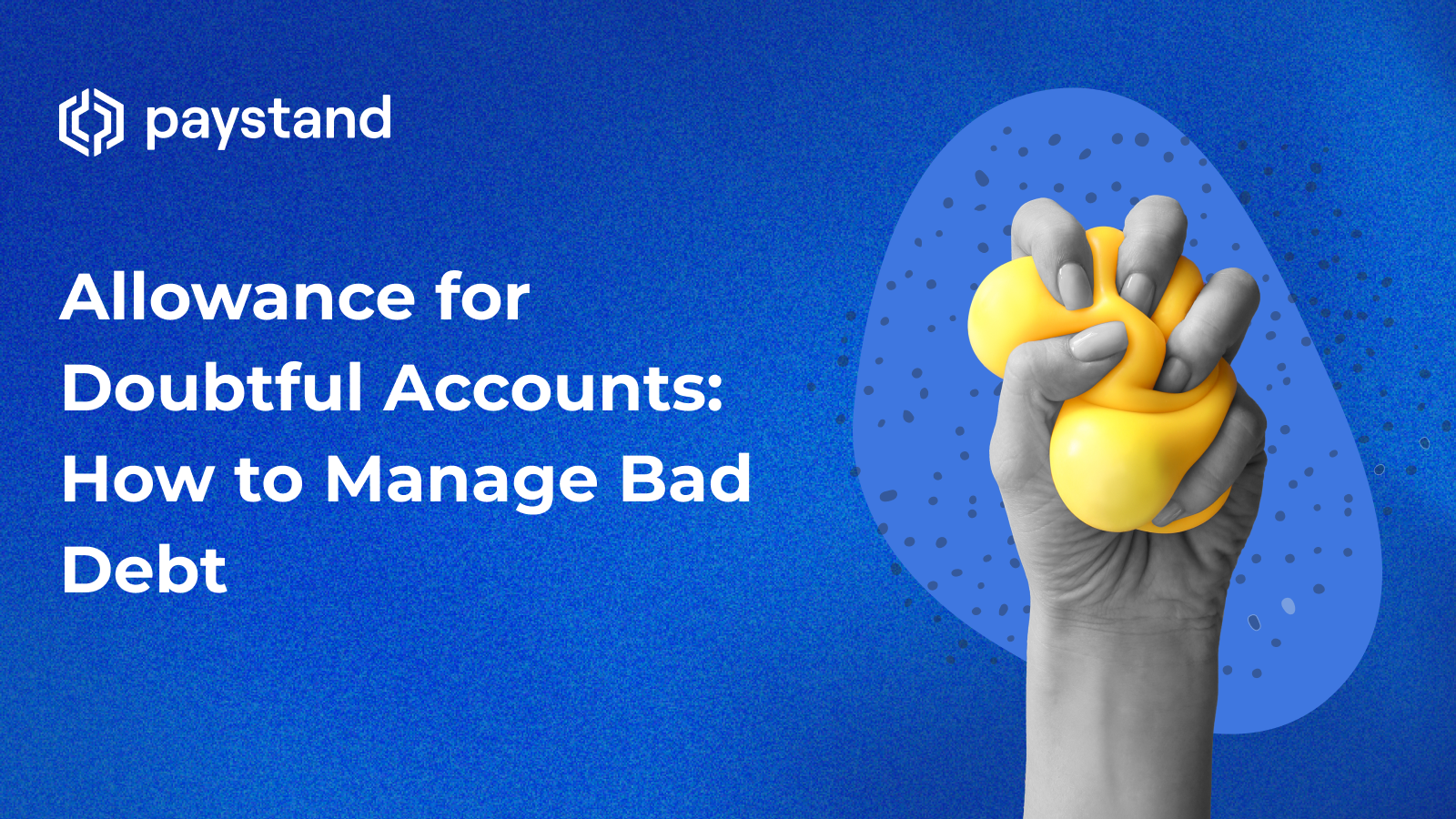Allowance for Doubtful Accounts: How to Manage Bad Debt

Table of Contents
- What is Allowance for Doubtful Accounts and Why It’s Important
- Industry Benchmarks for Allowance for Doubtful Accounts
- How to Calculate Allowance for Doubtful Accounts
- Is Allowance for Doubtful Accounts an Asset?
- What is a Bad Debt Expense?
- How to Calculate Bad Debt Expenses
Key Takeaways
- The allowance for doubtful accounts (ADA) helps finance teams anticipate potential bad debts and maintain accurate financial statements.
- Industry benchmarks for doubtful accounts vary from 1% to 5% of total accounts receivable, depending on the industry.
- Common methods to calculate ADA include the percentage of sales method and aging of accounts receivable method.
- The allowance for doubtful accounts is a contra-asset account, which offsets accounts receivable on the balance sheet.
- Bad debt expense represents uncollectible accounts, and it is recorded as an expense on the income statement.
- Bad debt expense is calculated using historical data and the chosen ADA estimation method.
Managing accounts receivable effectively is crucial for maintaining a company’s financial health. One of the key tools finance teams use to prepare for potential losses is the allowance for doubtful accounts (ADA). This reserve helps businesses anticipate uncollectible debts and maintain more accurate financial statements.
Understanding how to calculate ADA, its role in financial reporting, and its impact on business operations can help companies make better financial decisions. Whether you’re a CFO, controller, or finance manager, this guide will provide actionable insights on:
- The importance of allowance for doubtful accounts
- Industry benchmarks for ADA
- Calculation methods and best practices
- The relationship between ADA and bad debt expense
With these insights, businesses can improve cash flow forecasting, enhance financial accuracy, and minimize the impact of uncollectible receivables. Let's dive in!
What is Allowance for Doubtful Accounts and Why It’s Important
The allowance for doubtful accounts (ADA) is a financial reserve that companies set aside to cover anticipated bad debts from customers who fail to pay their invoices. This reserve helps businesses maintain accurate financial reporting by accounting for potential losses before they occur.
Why is ADA Important for Finance Teams?
- Improves financial accuracy: Ensures that accounts receivable are not overstated.
- Supports cash flow forecasting: Helps finance teams better predict cash inflows.
- Enhances risk management: Identifies customers who may default on payments.
- Ensures GAAP compliance: Properly recording ADA aligns financial statements with generally accepted accounting principles (GAAP).

Industry Benchmarks for Allowance for Doubtful Accounts
Industry benchmarks for the allowance for doubtful accounts vary depending on business size, industry, and customer payment history. Here are some general guidelines:
| Industry | Average Allowance for Doubtful Accounts (% of AR) |
|---|---|
| Retail | 1% – 2% |
| Manufacturing | 2% – 4% |
| Healthcare | 3% – 6% |
| Financial Services | 1% – 3% |
| SaaS & Technology | 2% – 5% |
Businesses should regularly analyze their historical bad debt trends and compare them to industry standards to determine an appropriate allowance percentage.
How to Calculate Allowance for Doubtful Accounts
There are two primary methods for calculating the allowance for doubtful accounts:
1. Percentage of Sales Method
This approach estimates bad debt based on a fixed percentage of total credit sales. The formula is:
Allowance for Doubtful Accounts = Total Credit Sales × Estimated % of Uncollectible Sales
Example: If a company has $1,000,000 in credit sales and estimates 2% as uncollectible, the allowance would be:
$1,000,000 × 2% = $20,000
2. Aging of Accounts Receivable Method
This method categorizes accounts receivable based on how long they have been outstanding and applies different percentages to each category.
| Age of Receivable | Estimated Uncollectible % |
|---|---|
| 0 – 30 days | 1% |
| 31 – 60 days | 3% |
| 61 – 90 days | 5% |
| 91+ days | 10% |
The total allowance is calculated by summing up the uncollectible amounts across all aging categories.
Is Allowance for Doubtful Accounts an Asset?
No, the allowance for doubtful accounts is not an asset. It is a contra-asset account that reduces the total accounts receivable balance on the balance sheet. The net accounts receivable calculation is:
Net Accounts Receivable = Accounts Receivable – Allowance for Doubtful Accounts
This approach ensures that the company reports only the amount it reasonably expects to collect from customers.
What is a Bad Debt Expense?
Bad debt expense is an accounting entry that records uncollectible accounts as an operating expense on the income statement. It represents the portion of accounts receivable that a company expects will never be collected.
How Does It Affect Financial Statements?
- Income Statement: Reported as an expense, reducing net income.
- Balance Sheet: Reduces accounts receivable through the allowance for doubtful accounts.
- Cash Flow Statement: No immediate impact, but affects future cash flows if actual bad debts are higher than anticipated.

How to Calculate Bad Debt Expenses
Bad debt expense is calculated using the same methods as the allowance for doubtful accounts.
1. Using the Percentage of Sales Method
Bad Debt Expense = Total Credit Sales × Estimated % of Bad Debts
Example: If credit sales are $500,000 and the bad debt estimate is 3%, the bad debt expense is $15,000.
2. Using the Aging of Accounts Receivable Method
Bad debt expense is determined by applying different loss rates to outstanding accounts based on aging categories and summing the estimated uncollectible amounts.
The allowance for doubtful accounts is a crucial tool for finance teams to manage credit risk, improve forecasting, and ensure financial accuracy. Understanding how to calculate and apply ADA helps businesses make informed decisions about their accounts receivable and avoid unexpected financial losses.
For more insights on best practices in accounts receivable automation, check out our comprehensive AR selection guide.





%20(1)%20(1).jpg?width=100&height=100&name=IMG_3752%20(1)%20(1)%20(1).jpg)